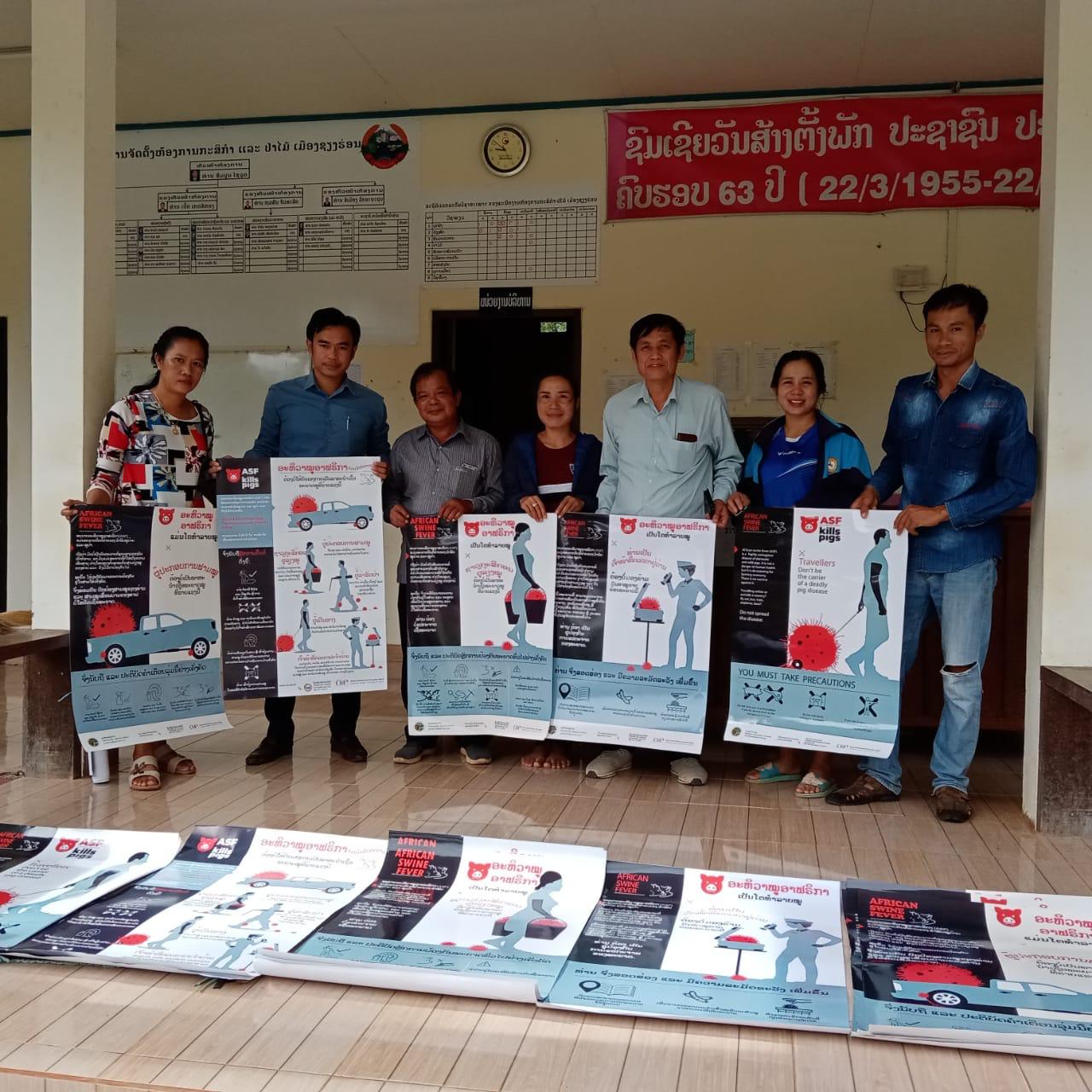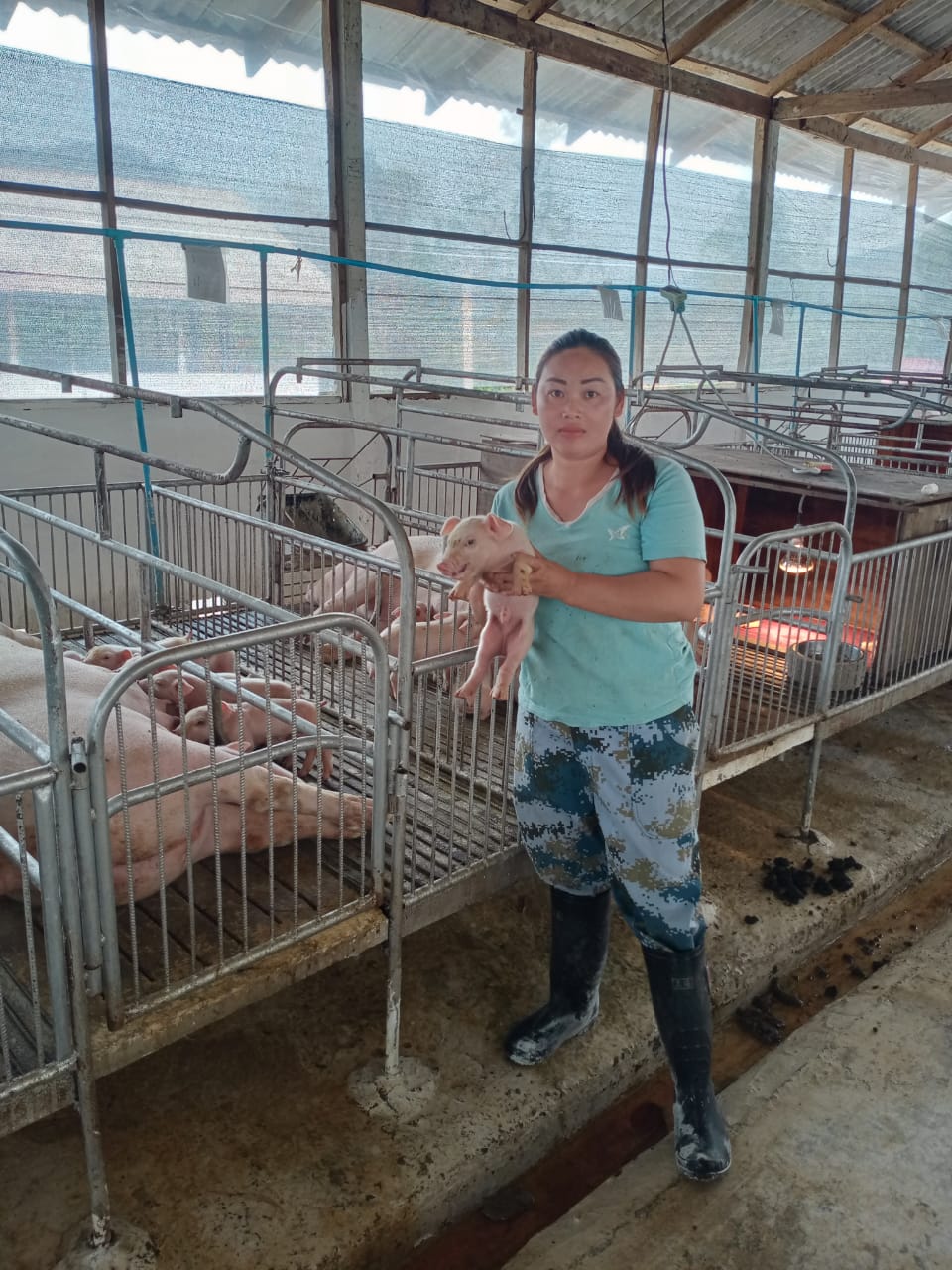2019 was an eventful year for Ms Bounmee Chaleanxay and many others working in the pig farming sector in Laos. The year was so devastating that farmers could not easily forget it. Bounmee, living at Bor, a village located in the Xay district of the northwestern province of Oudomxay is into small scale pig farming, a common activity in Laos. With a total of 1,055 pigs, Bounmee and her family heavily depend on this activity as their source of income. Yet, her pig farming business took an unexpected turn in 2019, when African swine fever (ASF) hit her country for the first time.
ASF is a deadly pig disease that can spread readily among pigs, ripping through farms within a short period and leaving red skin dying pigs in the process. Bounmee, lost all 1,055 pigs to this disease in 2019, impacting negatively on her financial resources to cater for her entire family.
As ASF started to spread to new provinces in Laos, effective communication became a crucial element in the national response to the disease. ASF transmission is strongly linked to human behaviours, such as transporting infected pigs or carrying contaminated products, among others. Therefore, the Ministry of Agriculture and Forestry in Laos, with the support of the World Organisation for Animal Health (OIE) implemented an extensive communication campaign since the confirmation of the first ASF cases in 2019.
As part of this campaign, more than 4,000 posters were disseminated among different actors, including farmers, butchers, and slaughterhouses operators, to create awareness about this disease and the required measures to stop its spread. Despite the uncertainties and despair brought by the COVID-19 pandemic, and with all hands-on deck approach, the Veterinary Services collaborated with different stakeholders to fight a common problem, by putting together a local task force for ASF. With this commitment in mind, the group made long journeys on bumpy roads to remote places such as market centres and small villages, to disseminate posters, and share important preventive measures messages with different local audiences.
Picture: Dissemination of ASF campaign posters at local market and petro pump station, Copyright: Department of Livestock Fisheries (DLF)
“It is important that farmers and slaughterhouse owners are well educated about ASF and how their actions can help stop its spread. That is why we have organised workshops in our local language to raise awareness on the preventive measures using simple messages,” says Ms Vilayphone Vorraphim, Director General of Lao Department of Livestock and Fisheries (DLF).
Since there is no approved vaccine for ASF, the use of risk communication is critical to halt the disease spread and safeguard the source of livelihoods of farmers like Bounmee, as well as the national economy and global food security. In this vein, the OIE is spearheading awareness creation and promoting positive farming practices and behaviours through its “ASF kills pigs” communication campaign. The campaign includes short animations, videos, leaflets, and infographics targeting various audiences and is available in more than 16 languages.
In 2020, Bounmee started to recover from the impact of the disease. Thanks to the information received through the communication campaign and other activities, she can currently apply the knowledge gained to protect her new herd of pigs from ASF, safeguarding her primary source of livelihoods engaged in over a decade.
Picture: Ms Bounmee Chaleanxay, a pig farmer in Odoumxay, Copyright: Oudomxay Provincial Livestock services
More information:

